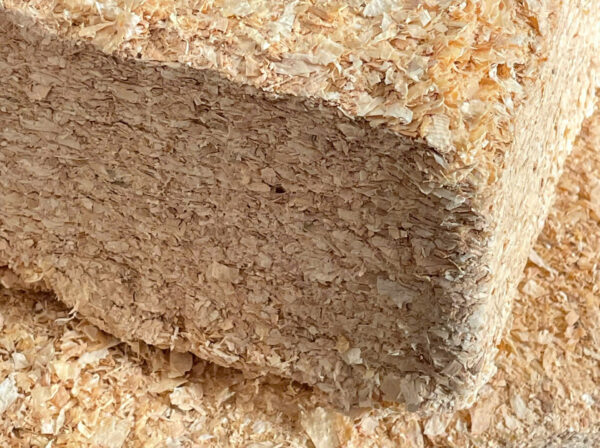Introduction: Pine Wood Shavings for Gardening and Mulching
Using pine wood shavings for gardening and mulching has become an increasingly popular practice among gardeners and landscapers alike. As a byproduct of woodworking and lumber production, pine wood shavings are not only sustainable but also highly beneficial for improving soil quality, retaining moisture, and reducing weed growth. In this article, we explore how to make the most of pine wood shavings in your garden and as mulch, and how to use them effectively to promote healthy plant growth.
1. Why Pine Wood Shavings Are Beneficial for Gardening and Mulching
Pine wood shavings offer a variety of benefits for gardening and mulching due to their unique characteristics:
A. Moisture Retention
One of the main advantages of using pine wood shavings as mulch is their ability to retain moisture in the soil. The shavings act as a protective layer, reducing evaporation and helping to keep the soil hydrated. This is especially important during hot, dry weather when plants are more susceptible to dehydration.
B. Weed Suppression
Mulching with pine wood shavings helps to suppress weed growth by blocking sunlight and preventing weed seeds from germinating. This reduces the need for herbicides and manual weeding, making garden maintenance more manageable.
C. Soil Insulation
Pine wood shavings provide excellent insulation for soil, protecting plant roots from extreme temperatures. In the winter, they act as a blanket to keep the soil warm, while in the summer, they help cool the soil, ensuring more stable growing conditions.
D. Slow Decomposition
Compared to other organic mulches like straw or leaves, pine wood shavings decompose more slowly. This means they last longer in the garden, reducing the frequency of replacement and minimizing labor.
2. How to Use Pine Wood Shavings for Mulching
Using pine wood shavings for mulching can be simple and effective when done correctly. Follow these steps for best result
s:
A. Prepare the Area
Before applying pine wood shavings as mulch, remove any weeds or debris from the garden bed or around plants. Clear the area to create a clean surface for the shavings.
B. Apply a Generous Layer
Spread a 2-3 inch layer of pine wood shavings around your plants or over your garden beds. Ensure the mulch is distributed evenly, covering the entire surface but leaving some space around the base of each plant to prevent excess moisture buildup that could lead to rot.
C. Maintain the Mulch
Over time, the mulch layer may thin due to decomposition or natural shifting. Check your mulch periodically and add more pine wood shavings as needed to maintain the desired depth and coverage.
3. Best Practices for Using Pine Wood Shavings in the Garden
While pine wood shavings offer many benefits, there are some best practices to follow to maximize their effectiveness:
A. Balance with Nitrogen
One potential drawback of using pine wood shavings is that they can temporarily deplete nitrogen levels in the soil as they decompose. To counteract this, consider adding a nitrogen-rich fertilizer or compost to your garden before applying pine wood shavings. This ensures that your plants have access to the nutrients they need.
B. Use in Appropriate Areas
Pine wood shavings are most effective in perennial beds, around trees and shrubs, and in vegetable gardens where long-term mulch is desired. Avoid using them in areas with delicate seedlings, as the thick layer may hinder their growth.
C. Avoid Acidic Soil
Pine wood shavings have a slightly acidic pH, which can affect the soil over time. If your garden already has acidic soil, be cautious when using pine wood shavings and monitor the pH levels regularly. If needed, you can amend the soil with lime or other alkaline materials to maintain a balanced pH.
4. Composting Pine Wood Shavings: A Sustainable Gardening Practice
Another way to make use of pine wood shavings is by adding them to your compost pile. Here’s how to incorporate them into your composting routine:
A. Shavings as a Carbon Source
Pine wood shavings are considered a “brown” or carbon-rich material, making them an excellent addition to compost piles. Carbon is essential for creating a healthy compost mix, balancing out nitrogen-rich “green” materials like food scraps and grass clippings.
B. Proper Balance in the Compost
When adding pine wood shavings to your compost, it’s important to maintain the right balance of carbon and nitrogen. A good rule of thumb is to have about 30 parts carbon to 1 part nitrogen in your compost pile. Too many wood shavings can slow down the decomposition process, so adjust the ratio as needed.
C. Shred Larger Shavings
If your pine wood shavings are large or coarse, consider shredding them into smaller pieces before adding them to your compost. Smaller shavings break down more quickly and integrate more easily with other compost materials.
5. The Environmental Benefits of Using Pine Wood Shavings in the Garden
In addition to their practical benefits, using pine wood shavings for gardening and mulching is also an environmentally friendly practice:
A. Reducing Waste
By using pine wood shavings, you’re repurposing a byproduct that might otherwise be discarded. This helps reduce waste and promotes sustainability by making use of materials that come from renewable resources.
B. Sustainable Mulching
Unlike synthetic mulches, pine wood shavings decompose naturally over time, returning nutrients to the soil and contributing to the ecosystem. This sustainable practice aligns with eco-conscious gardening methods.
C. Conserving Water
As mentioned earlier, pine wood shavings help retain moisture in the soil, reducing the need for frequent watering. This not only conserves water but also supports water-efficient gardening practices, which are crucial in drought-prone areas.
6. Pine Wood Shavings in Raised Beds and Container Gardens
Pine wood shavings are also highly beneficial in raised beds and container gardens. Here’s why they work well in these setups:
A. Improved Drainage
In raised beds and containers, proper drainage is key to preventing root rot and other moisture-related issues. Pine wood shavings help improve drainage by creating air pockets that allow excess water to escape while still retaining some moisture.
B. Temperature Regulation
The insulating properties of pine wood shavings are particularly helpful in raised beds and containers, where temperature fluctuations can be more pronounced. The shavings help keep the soil cooler in the summer and warmer in the winter, creating a more stable growing environment for plants.
C. Aesthetic Appeal
Pine wood shavings also enhance the visual appeal of raised beds and containers. Their light color creates a clean and natural look, complementing the overall aesthetic of your garden.
7. Tips for Storing Pine Wood Shavings for Gardening Use
To ensure your pine wood shavings remain fresh and effective, follow these storage tips:
A. Keep Them Dry
Store pine wood shavings in a dry, sheltered area to prevent them from getting damp. Wet shavings can lose their effectiveness as mulch and may develop mold or mildew.
B. Use Airtight Containers
If possible, store your pine wood shavings in airtight containers to protect them from moisture, pests, and contamination. This will help preserve their quality until you’re ready to use them.
C. Avoid Prolonged Sun Exposure
Prolonged exposure to sunlight can cause pine wood shavings to dry out and lose their beneficial properties. Keep them in a shaded area to maintain their integrity.
Conclusion: Making the Most of Pine Wood Shavings for Gardening and Mulching
Pine wood shavings offer a versatile and sustainable solution for gardeners and landscapers alike. From moisture retention and weed suppression to improving soil quality and reducing waste, these shavings can significantly enhance your gardening efforts. By following the best practices outlined in this guide, you can effectively incorporate pine wood shavings into your gardening and mulching routine, contributing to both healthier plants and a more sustainable environment.
Whether you’re using them in traditional gardens, raised beds, or compost piles, pine wood shavings are a valuable resource that can help you make the most of your gardening endeavors.





